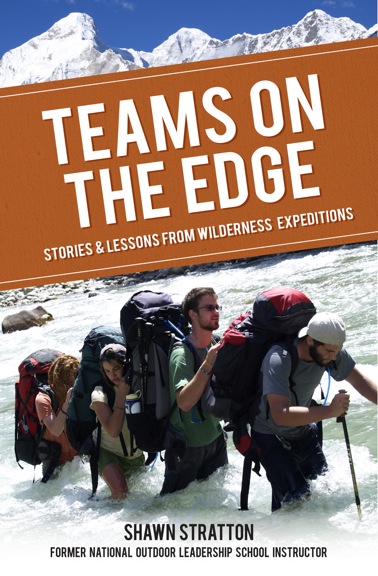A few years ago Google set up a research team to find out the elements that create high performing teams. What they found and the length of time it took to find it surprised them.
For several years they studied over 150 teams working within Google. Many of the senior executives in the company believed that the best teams developed when the best people were put together on a project. After gathering an enormous amount of data, the researcher found it was almost impossible to find meaningful patterns.
In an article recently published in the New York Times’ Google’s lead researcher on the project Abeer Dubey stated, ‘‘At Google, we are good at finding patterns. But there weren’t strong patterns here.’’ The people comprising the team didn’t seem to matter.
This finding didn’t surprise me. Leading wilderness expeditions for years with new teams, people would often ask me “what do you do if you get a bad team and you are stuck with them for a month in the mountains”. Strangely enough, that was never a concern of mine. As I gained experience leading, I came to realize that leaders play a more significant role in creating effective teams than the people who make up the team.

© Shawn Stratton
Frustrated with the lack of patterns in the data they collected, the researchers delved further into reviewing past academic studies on how teams work. In the literature, they discovered that psychological and sociological research kept using the term “group norms” when describing successful groups. Norms are the traditions, behavioral standards and unwritten rules that govern how we function when we gather. It was becoming clear that the most effective teams had ‘group norms’ that added to their success.
The challenge that the Google researchers now had was figuring out which ‘group norms’ were the most valuable. With further research, the group norm that emerged as one of the most powerful was ‘psychological safety’.
‘Psychological safety’ has been described by Harvard Business School professor Amy Edmondson as a ‘‘shared belief held by members of a team that the team is safe for interpersonal risk-taking.’’ “A sense of confidence that the team will not embarrass, reject or punish someone for speaking up,’’ Edmondson wrote in a study published in 1999.
As a leader this makes total sense to me. On an expedition, ‘psychological safety’ would fall under the term ‘expedition behavior’ or simply EB. One of the first things I would discuss with a new team would be the concept of EB which boils down to being the teammate you would want to have on your team. A big part of EB and developing trust fast includes ‘psychological safety’. (Related – How to Build Teams – Expedition Behavior – video)
Creating a psychologically safe environment for a team needs to be spearheaded by the leadership in the developing stages of a team.
How to Build Psychological Safety on a Team?
It’s all about feelings!
The Google research found that people don’t want to have to put on a ‘work face’ when they arrived at their desk each morning, that is to have complete separation of work and home life. It turns out we want people to ask how they are feeling and have a safe environment to share our feelings no matter how messy or sad or excited we are feeling, without fear of reprisal.
Leaders need to allow for the creation of an emotional safety net to develop within their teams. One way to create this environment is to carve out time for people to actually share their feelings and not just updates on the latest reports or budget numbers.
Leaders can take the time at weekly meetings to start by asking how people are feeling and why. The first few times these conversations happen, it will be beneficial if the leader shares first to set an example of the level and type of information to be shared. In one example from Google at an offsite retreat with a newer team, the leader started off the conversation telling his team that he had cancer and the effects it was having on his life. This opened the doors for in-depth sharing from the rest of the team.
Likewise, when I work with corporate groups I often ask them to share with a partner the struggle they had as a child. In one case I had the president of the company go first and he discussed having a learning disability and the challenges it caused him as a child. I could see on the faces of his team members just how surprised they were that he was sharing this new information with them. See, this example gave the rest of the team the comfort in sharing their struggles as a child and how it made them feel.
Creating this level of vulnerability within a team also goes a long way in developing strong trust bonds and trust is the basic building block of teams. (Related: How to Build Trust Through Vulnerability – video)
If you are not sure how to start conversations, allow people to open up about their past experience and values. At this link I have included a list of 100 Questions to Spark Authenticity
Resource:



